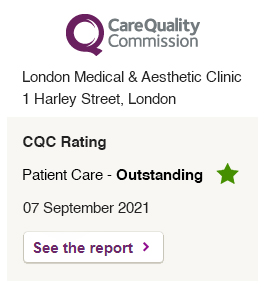The Diamonds hitmaker says she’s just like the rest of us and is desperate to get rid of her orange peel skin – Cellulite.

Cellulaze- With her enviably trim figure and superstar looks we thought Rihanna would be immune to things like cellulite. But the singer says she’s just like the rest of us in suffering from those dreaded dimples – and she HATES it.
During a recent interview the Bajan-born stunner was asked what her perfect day would be like.
Rihanna’s answer!
“The day I wake up without cellulite? Now that would be the perfect day.”
The interviewer later asked the question we’re all secretly thinking – “How do you eat goddamn pasta every day and still look like that?”
“You mean how I got my cellulite?” Rihanna hits back.
It’s a whole new self-conscious side of Rihanna we’ve never seen before – but clearly even celebs aren’t immune to a spot of cellulite every now and again.
The gorgeous Rihanna still look pretty fearless – posing in the mouth of a shark for the cover of the mag.

Cellulaze-Cellulite
The singer said her incredible looks often require lots of maintenance – but she’s equally comfortable kicking back and going au naturele.
Asked how much time her style takes, she said: “At times a lot of maintenance, and at times none. I have a job that requires quite a lot of glam, and I have a great team that helps me with that.
“But sometimes, like when I’m in the studio or on vacation, there’s little to no maintenance.”
Rihanna is not alone who suffers from Cellulite!
An estimated 85 percent of women over the age of 20 are affected by cellulite, a degenerative and largely untreated condition in which dimply herniations and depressions develop within the layers of the skin.
As common as cellulite is, there’s also an awful lot of misinformation out there about what it is, what causes it, and how to get rid of it.

Before placing blame, scheduling a cosmetic procedure, or spending a fortune on over-the-counter products, read up on the controversial factors behind cellulite.
Cellulite is enlarged pockets of fat that are pushed towards the skin’s surface by tight, inflexible connective tissue. It’s a problem that plagues even thin women.
The cause of bad cellulite isn’t skin deep, it runs much deeper than that. Uneven, dimpled skin begins to affect most women after puberty and the problem usually becomes worse with age and with the after effects of childbirth.
Cellulite is caused by several physiological changes including:
An increase in the number or size of fat cells pushing up through the tissue beneath the skin.
Thin connective tissue under the skin that becomes stretched or distended as a result of aging or weight gain.
Undulations caused by hardening of tissue underneath the skin.

Cellulaze- for cellulite
Toxins in the Body!
Some over-the-counter cellulite products may claim to help remove impurities and toxins from the body. But neither their efficacy nor their claims about what causes cellulite are supported by science.
Cellulite occurs when underlying fat deposits begin to push through layers of collagen fibers, or connective tissue, under the skin (often in the buttocks and thigh areas, but also on arms, stomachs, and other common trouble spots, as well).
Connective tissue can be weakened by hormones, lack of exercise and muscle tone, excess fat, and poor circulation, says Dr Ayham Al-Ayoubi, plastic and laser Surgeon from The London Medical and Aesthetic Clinic in London “The cellulite condition is not caused by toxins.”
Women get more cellulite than men!
Women tend to carry more fat around their hips and thighs. We also have less supportive connective tissue to keep it all in place. “If you think of scaffolding outside a building that has those X crosses on them, that is sort of what men’s fat chambers have,” says Dr Ayham Al-Ayoubi.
It is estimated, however, that about 10% of men suffer from cellulite, as well.
Cellulite gets worse with age!
Hormones also seem to play a role in the appearance of cellulite: As women age, their bodies produce less estrogen—a hormone that helps keeping blood vessels flowing smoothly.
Less estrogen can mean poorer circulation, which can also mean a decrease in new collagen production and the breakdown of older connective tissue.
Cellulite is in the genes!
It’s true that cellulite runs in families; if the mother and grandmother had cellulite, then the girl have a much higher chance of also developing it.
In fact, there’s even a genetic test that can tell whether someone have a gene variant that puts her at higher risk for moderate to severe cellulite—but, considering that most women will develop cellulite in their lifetimes (and the fact that they’ll know it when they see it), it’s not exactly worth its hefty price tag.
So, if someone is not of the lucky ones with smooth-skinned relatives, take heart: Genetics is only one small part of the cellulite puzzle; factors like diet, exercise, and maintaining a healthy weight also play a role.

Cellulaze for cellulite
Cellulite happens to out-of-shape people!
Being overweight does make the appearance of cellulite more noticeable; the more fat the woman have underneath her skin, the more it’s likely to put stress on her connective tissue and bulge out of its weak spots.
Cellulite also happens to women of all shapes and sizes, says Dr Ayham Al-Ayoubi. “I have even treat top models suffering from cellulite using Cellulaze laser and Velashape,” he says. “They’re very lean, they work out and eat well, they do everything right but they still have cellulite.”
Can exercise reduce cellulite!
A regular exercise practice cannot cure cellulite—but in many cases it can help prevent or reduce its appearance.
Cellulite occurs when connective fibers underneath the skin become weak or lose their elasticity, but stretching and strengthening those areas (in addition to burning away excess fat overall) can help.
Dr Ayham Al-Ayoubi explains: Firming and toning the muscles will in turn tighten the skin, giving the illusion that cellulite is less noticeable. Also, Yoga routines that target the butt and thighs can help, as well as strength-training moves that build muscle and boost circulation.
Cardio is best for reducing all-over jiggle!
Running or other forms of cardio can help keep weight off, which may reduce the appearance of dimples and dents. But to really smooth out the skin, someone got to strength train.
One clinical study found that adults who did three 30-minute aerobic workouts each week for eight weeks lost four pounds, but gained no muscle—and only slightly improved body composition.
When they paired 15 minutes of aerobic activity with 15 minutes of strength training three times a week, however, they lost 10 pounds of fat, added two pounds of muscle, and saw a greater overall improvement in body composition. In other words, they looked better and lost some of the wiggle!
Skin-firming creams can NOT cure cellulite!
Despite what someone might read on their labels, no topical creams—prescription or over-the-counter—have been shown hardly any reduction of the appearance of cellulite.
Studies have found, however, that products containing Retinoids (labelled as retinol over-the-counter) may provide some temporary minimum effects by creating a thicker skin cover that can help camouflage bumps.

Cellulaze-Cellulite
There is limited evidence that creams or scrubs with stimulant ingredients, like caffeine, ginger, and green or black tea, may also help by improving circulation and breaking down fat-cell stores, but they are less proven. These topical creams work do little or nothing and they are more likely help with slimming and body contouring, which is not the same as cellulite.
Skin fillers can even out dimply skin!
Injectable dermal fillers like Dermal Fillers and Radiesse, used primarily to plump up sagging cheekbones and reduce facial wrinkles, have also shown to be beneficial—at least temporarily—for cellulite-plagued sections of skin.
Dr Ayham Al-Ayoubi: It’s like putting icing on a lumpy cake to make it look better, especially if someone is really skinny and they have a few really deep divots, dermal fillers can plump that up and even it out really well.
However, the procedure is very costly and the results tend to only last a few months.

Non-invasive procedures for cellulite do work!
Laser, radio-frequency, and massage techniques have been used for several years to reduce the appearance of cellulite—and while their results are not permanent, they are effective in the short-term, says Dr Ayham Al-Ayoubi.
These non-invasive procedures are going to work better than some drug-store cream, and they can be worth it if someone have the time and the money to spend on them.
TriActiv laser, VelaSmooth and VelaShape treatments require 6 to 12 sessions to significantly improve appearance, and require monthly maintenance appointments.
The radio-frequency treatment like, Thermage are more expensive but results seem to last six months to a year.
Liposuction will NOT make Cellulite look better!
If cellulite is the problem, liposuction should not be the solution, says Dr Ayham Al-Ayoubi. In fact, the cosmetic procedure could even make fat distribution more uneven, making its outward appearance even worse. Non-surgical Endermologie procedure has been shown to help but the limited results are visible only after about 10 visits.
Certain foods can help fight cellulite!
Diet alone can’t determine whether someone will or will not get cellulite, but eating a well-balanced, plant-heavy diet can reduce inflammation throughout the body and help maintain a healthy weight, says Dr Ayham Al-Ayoubi.
A healthy diet, along with regular exercise, can minimize the appearance of cellulite, but diet and exercise alone will never completely eliminate it.
Staying hydrated—both by drinking water and by eating plenty of foods with high water content—will also keep the connective tissue strong and supple, and may even help slimming down.
The aim is to eat more cucumbers, radishes, tomatoes, and bell peppers, which along with many other fruits and veggies are all more than 90% water.
Clothing can make an impact on Cellulite!
Wearing compression-style leggings while exercising can reduce thigh jiggle as someone move—but it’s only a temporary effect, says Dr Ayham Al-Ayoubi.
“For any clothing that claims to actually have lasting results, it’s just a marketing gimmick and it’s not true,” he adds. In fact, for some tight clothes, the opposite may be true: Elastic bands on underwear, for example, can actually contribute to the appearance of cellulite if they cut off circulation and limit blood flow.
Smoking affects the appearance of cellulite!
Cigarette smoke has been shown to reduce blood vessel flow and to weaken and disrupt the formation of collagen, allowing for the connective tissue to become stretched and damaged more easily and for underlying fat to show through.
Dr Ayham Al-Ayoubi: Smoking causes premature wrinkles and aging, leave skin dry and discoloured and can contribute to stretch marks.
There’s no permanent cellulite solution!
This one’s not exactly true or false, but scientists do seem to be getting better and better at finding long-term solutions for treating trouble spots
The most recent and promising procedure is a surgery called Cellulaze, approved by the FDA , in which an optic laser melts fat, breaks up fibrous connective tissue and stimulates the growth of new collagen, all through a pinhole-sized incision in the skin.
Dr Ayham Al-Ayoubi explains: It’s great because it works on both those fibers that are pulling down your skin and on the fat globules that are popping through.
Cellulaze laser distinguishes itself from other cellulite treatments, including liposuction, because rather than simply targeting the skin, it focuses on the structural causes of cellulite that lie well below the skin.
Patients can see a remarkable difference in cellulite appearance after just one laser cellulaze procedure.
Cellulaze laser is designed to diminish lumpy pockets of fat, release areas of skin depression and increase elasticity and thickness of the skin. Patients usually require just one treatment.
Cellulaze laser proprietary SideLight 3D side-firing technology directs controlled, laser thermal energy to the treatment zones – typically the buttocks and thighs.
In the Cellulaze laser surgical procedure, which is performed under a local anaesthetic, IV sedation or light general anaesthesia, the surgeon inserts a small cannula – a narrow tube the size of a pen tip, under the skin.
Cellulaze laser treatments have demonstrated a benefit from the use of subcutaneous laser energy in terms of tissue tightening through tissue coagulation as well as the regeneration of collagen and connective tissue.
Dr Ayham Al-Ayoubi explains: “Unlike the non-invasive treatment approaches that aim to temporarily treat the appearance of cellulite, Cellulaze laser uses a three-dimensional approach to directly target the subdermal structure that forms the foundation of cellulite.”
Who should perform Cellulaze treatment!
Medi-spas can also perform treatments such as Endermologie and non-invasive procedures, but surgical laser procedure like Cellulaze must only be performed by cosmetic surgeon specialised in laser surgery.
To read more about Cellulaze click here
View all posts by Dr Ayham Al-Ayoubi Click here





